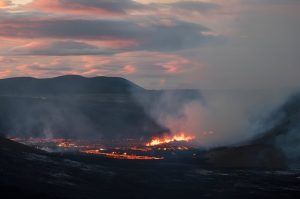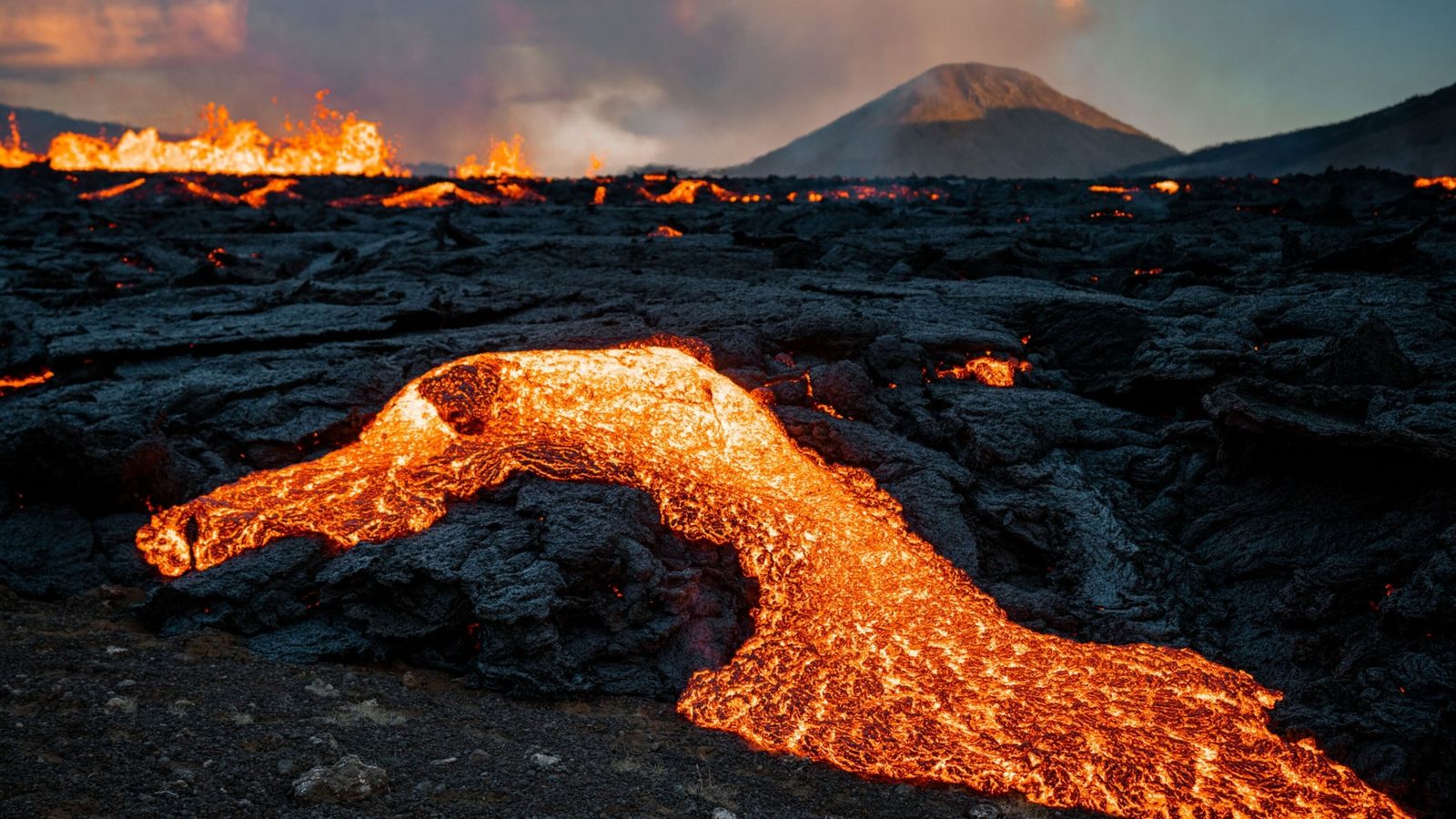The rugged landscape of southwestern Iceland is a theater of nature’s grandest spectacles, where the ongoing volcanic drama captures the imagination and mesmerizes onlookers worldwide. Nestled between glaciers and vast expanses of black sand beaches, this region has become a stage for Mother Nature’s incredible displays.
A Land Forged by Fire and Ice
Southwestern Iceland is a land forged by the meeting of fire and ice. It’s a place where ancient glaciers carve their paths through the earth, while beneath the surface, molten lava bubbles and churns, creating a unique and ever-changing landscape. The clash between these opposing forces results in a breathtaking array of geological wonders, none more captivating than the region’s volcanic activity.
The Eruption Chronicles
In recent times, southwestern Iceland has been witness to a series of remarkable volcanic eruptions. The most recent and prominent among these is the eruption at Fagradalsfjall, which began in March 2021. This event marked the first volcanic eruption in the Reykjanes Peninsula in over 800 years, captivating the world with its fiery display. The Fagradalsfjall eruption, characterized by its mesmerizing lava flows and vivid colors against the Icelandic night sky, attracted both locals and tourists alike
Impact on the Environment and Community
While these eruptions offer a breathtaking display of nature’s power, they also pose challenges to the surrounding environment and local communities. The lava flows reshape the terrain, altering the landscape and potentially impacting nearby ecosystems. Moreover, the constant threat of ash clouds and volcanic gases necessitates careful monitoring to ensure the safety of residents and visitors alike. However, amidst these challenges, the eruptions also bring opportunities. They attract scientists and researchers from around the world, offering a unique chance to study the raw processes of volcanic activity up close. This scientific interest contributes to a better understanding of volcanic behavior, aiding in the development of technologies and strategies for volcanic risk mitigation globally.

Tourism and Cultural Significance
The volcanic eruptions in southwestern Iceland have also significantly impacted tourism in the region. Visitors are drawn by the allure of witnessing such natural phenomena firsthand, contributing to the local economy and cultural exchange. Tour operators offer guided tours, allowing adventurous souls to get as close as safety permits to these fiery displays, creating unforgettable memories and fostering a deeper appreciation for the forces that shape our planet. Moreover, volcanoes hold immense cultural significance in Iceland’s history and folklore. They are woven into the fabric of Icelandic identity, inspiring legends and stories passed down through generations

The Future of Volcanic Activity
As the volcanic drama continues to unfold in southwestern Iceland, the future remains uncertain yet undeniably fascinating. The region’s volatile geological nature ensures that eruptions will continue to occur, each bringing its own spectacle and impact. Advancements in technology and monitoring systems offer hope for better predicting and understanding volcanic activity, aiding in disaster preparedness and minimizing risks to communities. Scientists and researchers remain vigilant, studying these eruptions to unlock the mysteries of the Earth’s inner workings and improve our ability to forecast and respond to volcanic events globally.
Conclusion
Southwestern Iceland’s epic volcanic drama is a testament to the awe-inspiring power of nature. It’s a reminder of the Earth’s dynamic and ever-changing nature, where fire and ice converge to create landscapes that captivate and inspire. As the eruptions continue to shape this region, they serve as a window into the planet’s geological past and future, inviting us to witness, learn, and respect the forces that shape our world.




